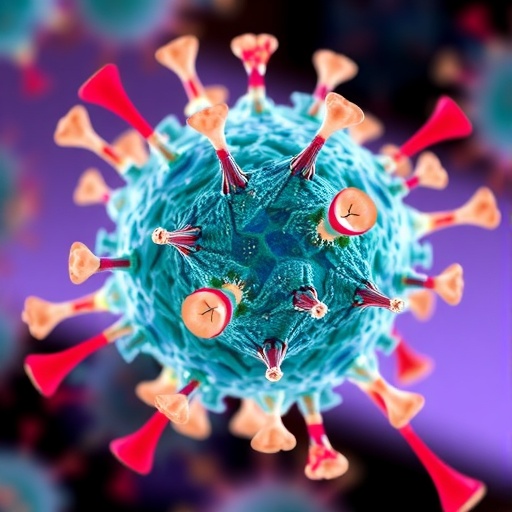
Credit: Photo by Kurt Stepnitz
EAST LANSING, Mich. – Michigan State University researchers, for the first time, have identified how plants' largest cell factory moves to maintain vital functions, which could lead to advances in improving plant cells' critical functions and growing better crops.
The findings, published in the current issue of Current Biology, reveal a new protein that keeps cellular cargo on track, quite literally. The discovery of SYP73, a plant protein, allowed the researchers to explain how the factory stuck to its track.
"Healthy cells operate as smoothly as the best Minecraft city imaginable," said Federica Brandizzi, MSU Foundation Professor of plant biology. "The miniature cities are fully equipped with all of the facilities, or organelles, that are necessary for a smooth-running operation."
Administration center, factories and even recycling centers are all there, running at 100-percent efficiency. In contrast to the infrastructures and city buildings in cells, however, the organelles, are not built on static foundations. They are huge, mobile cellular cargos that travel rapidly to reach resources and deliver products. When organelles go off the rails and mobility is disrupted, bad things happen.
"In human neurons, glitches in these movements result in severe neuro diseases," said Brandizzi, an MSU AgBioResearch scientist. "But before our paper, scientists had little idea about how the organelles moved on their tracks in plant cells beyond the conventional proteins that make up the cytoskeleton."
Brandizzi and her team of MSU scientists, focused on the largest factory in a cell – the endoplasmic reticulum. Earlier studies had proven that the ER moved around the cell on a track, known as actin cytoskeleton propelled by myosin, structures that give cells their shape as well as serve as a rail and motor system at the molecular level.
Taking an interdisciplinary approach using elaborate microscopic and biochemical techniques, the team revealed where the cellular rubber hit the road.
"Scientists have been looking for this direct connection for many years," Brandizzi said. "Since SYP73, we find that this connection is crucial to plant development, and we can now seek new ways to increase plant yield through cell biology."
###
Additional MSU researchers contributing to the study include: Pengfei Cao, Luciana Renna and Giovanni Stefano, members of the MSU-DOE Plant Research Lab and the plant biology department.
This research was funded by the National Science Foundation and the U.S. Department of Energy.
Michigan State University has been working to advance the common good in uncommon ways for more than 150 years. One of the top research universities in the world, MSU focuses its vast resources on creating solutions to some of the world's most pressing challenges, while providing life-changing opportunities to a diverse and inclusive academic community through more than 200 programs of study in 17 degree-granting colleges.
For MSU news on the Web, go to MSUToday. Follow MSU News on Twitter at twitter.com/MSUnews.
Media Contact
Layne Cameron
[email protected]
517-353-8819
@MSUnews
http://msutoday.msu.edu/journalists/
############
Story Source: Materials provided by Scienmag




